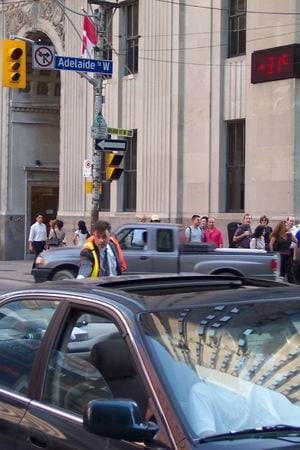The irony of locals complaining about seemingly frequent blackouts is that during the most famous power outage of the last 40 years, Pelham mostly kept the lights on.
During the great northeast blackout of August 2003, the town was somehow spared because it was getting its electricity directly from the Sir Adam Beck Hydroelectric Station on the Niagara River.
“That was a funny one,” said former Pelham Town Councillor and Niagara Peninsula Energy (NPEI) board member Brian Walker. “We had power through the whole thing. All around us we were blacked out.”

Walker believes the system is in better shape that it used to be, thanks in part to upgrades made some 15 years ago — that included an underground backup line between Merritt and Port Robinson Roads. He adds that the power supply for Pelham today comes from the Hydro One transfer station on Barron Road in Allanburg.
While Hydro One covers the vast majority of Pelham, the old village of Fonthill is the domain of NPEI — which took over the old Pelham Hydro system in 2008. Walker says Hydro One has been working on improving the station in recent years, something a company spokesperson echoed.
“Our crews have completed upgrades at our Allanburg Transmission Station in recent years to improve reliability and increase capacity as this area continues to grow,” Tiziana Baccega Rosa told the Voice.
Yet while load capacity is one thing, a power grid anywhere is still prone to unpredictable issues. A possibly apocryphal story about the origin of the 2003 blackout centres around a wayward squirrel in Ohio. However, while wildlife can certainly create problems for power lines, a bigger issue is tree branches and limbs.
“Trees are a sensitive issue, they always have been,” said Walker. “You try and keep the branches away from the wires — but if we had to adhere [strictly] to the guidelines, Fonthill would be desecrated. You’re ideally supposed to keep them three metres [away]. I can’t imagine what the trees would look like in this town.”
A stroll through any Ontario community will indicate many tree branches are less than three metres from power lines, which is why the matter of pruning is important.
While a Town of Pelham Public Works staffer asserted two weeks ago that NPEI does not provide forestry services, they actually do — through outside contractors.
“At NPEI, vegetation management is executed by third-party utility arborists,” NPEI’s Sue Forcier told the Voice. “Using their specialized knowledge of growth rates of various vegetation, arborists may trim back more growth in specific areas to account for the different growth rates. NPEI service territory is divided into nine zones for vegetation management.”
This appears to be news to the Town of Pelham.
“To my knowledge [NPEI] has not reached out to inform the Town of any line-clearing operation in the same way as Hydro One provides as a regular annual maintenance program,” said Town Communications and Public Relations Specialist Marc MacDonald.
Manager of Public Works Ryan Cook only mentioned Hydro One’s trimming services when reached last week.
“We work closely with Hydro One’s forestry department and speaking with them in the past, we were told that they try to trim back approximately five years growth, as their goal is to prune their lines every five-to-seven years,” Cook said. “The actual amount would depend on the tree species and its speed of growth. Hydro One is currently performing tree pruning in the Town of Pelham to protect their infrastructure. This includes private trees and trees found within the road allowance.”
Compounding the issue of older tree limbs is southern Ontario’s often-volatile summer weather — now likely intensified by climate change.
“I might be getting old, but I’ve lived in this house for 39 years,” Walker said. “I think we get more high winds than we used to.”
Of course, exposed power lines in an urban area are mostly a product of a bygone era. While the older parts of Pelham and even big cities like Toronto feature a maze of wires criss-crossing the sky, most construction over the last half century has placed utilities underground. Unfortunately, it’s not that simple to just switch over a residential neighbourhood to buried cables.
“It’s very, very costly,” Walker said. “The other thing people would have to watch is if you have an older home, and you had to switch over to underground, then your whole house would have to be subject to inspection. That might be a bit of a shock, no pun intended.”
One upside to exposed lines, however, is easier access for general maintenance. But as the large Fonthill subdivisions that were constructed beginning in the 1970s continue to age, Walker foresees more work — and digging — ahead.
“Those are closing in on the 50-year mark,” he said.


